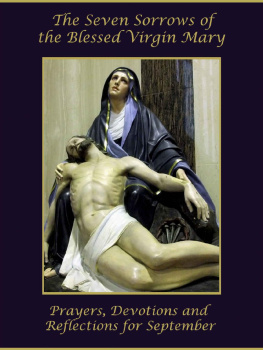Sr. Mary Alphonsus - St. Rose of Lima
Here you can read online Sr. Mary Alphonsus - St. Rose of Lima full text of the book (entire story) in english for free. Download pdf and epub, get meaning, cover and reviews about this ebook. year: 2015, publisher: TAN Books, genre: Non-fiction. Description of the work, (preface) as well as reviews are available. Best literature library LitArk.com created for fans of good reading and offers a wide selection of genres:
Romance novel
Science fiction
Adventure
Detective
Science
History
Home and family
Prose
Art
Politics
Computer
Non-fiction
Religion
Business
Children
Humor
Choose a favorite category and find really read worthwhile books. Enjoy immersion in the world of imagination, feel the emotions of the characters or learn something new for yourself, make an fascinating discovery.
- Book:St. Rose of Lima
- Author:
- Publisher:TAN Books
- Genre:
- Year:2015
- Rating:3 / 5
- Favourites:Add to favourites
- Your mark:
- 60
- 1
- 2
- 3
- 4
- 5
St. Rose of Lima: summary, description and annotation
We offer to read an annotation, description, summary or preface (depends on what the author of the book "St. Rose of Lima" wrote himself). If you haven't found the necessary information about the book — write in the comments, we will try to find it.
St. Rose of Lima — read online for free the complete book (whole text) full work
Below is the text of the book, divided by pages. System saving the place of the last page read, allows you to conveniently read the book "St. Rose of Lima" online for free, without having to search again every time where you left off. Put a bookmark, and you can go to the page where you finished reading at any time.
Font size:
Interval:
Bookmark:
St. Rose of Lima
Patroness of the
Americas
Sister Mary
Alphonsus, O.SS.R
Imprimatur: |
| John J. Carberry |
Archbishop of St. Louis | ||
June 7, 1968 |
Originally published by B. Herder Book Co., St. Louis, Missouri, and London, England.
Copyright 1968 by B. Herder Book Co.
Copyright 1982 by TAN Books, an Imprint of Saint Benedict Press, LLC.
Library of Congress Catalog No.: 81-86444
All rights reserved. No part of this book may be reproduced or transmitted in any form or by any means, electronic or mechanical, including photocopying, recording, or by any information storage or retrieval system, without permission in writing from the publisher.
TAN Books
Charlotte, North Carolina
www.TANBooks.com
2012
IN MEMORY OF
MY
PARENTS,
ESPECIALLY MY MOTHER,
WHO HELPED ME
WITH
THIS BOOK.
Cross and Crown Series of Spirituality
LITERARY EDITOR
Reverend Jordan Aumann, O.P., S.T.D.
NUMBER 36

PREFACE
T HIS BOOK tells the story of a humble young lady of second class nobility of seventeenth-century Lima. She was so poor that at times she had to work miracles to feed her family. She hated parties, although she was the center of every one she went to. She turned down the suitors that flocked to her door. Her exits from home were to the neighboring church of the Dominicans or at times to the homes of friends. She was deft with her fingers, skilled in the garden, a gifted musician and poet. She played her guitar, nursed the sick, passed out free mixtures of herbs to the poor. When she died, the whole city mourned her.
The room where they first laid her out shone with glory. Her body stayed flexible, her skin soft, her cheeks were flushed. Her eyes would not close, nor her mouth, which curved up in a smile. A clamor of people outside, a dense stream of mourners passing by the bier, an influx of persons from beyond Lima's limits were but the beginning. Soon, such a tumult arose within the house where she lay that the viceroy sent his private guard to keep order.
Her body was moved to the church of St. Dominic. There, the wonders began. From morning till night, for two days and a half, the crowd milled around it. Time after time, relic-seekers cut her habit to shreds. In vain was it replaced. When the coffin was wheeled into the chapel of Our Lady of the Rosary, the statue of Mary and the Infant Jesus moved. All saw it. The Queen of heaven smiled; both she and her Son bowed to the body. "A saint! She's a saint!" murmured the throng.
When the archbishop was singing her Requiem Mass, his voice and the choir were drowned out. The Dominican friars had to give up and say the psalms in private. At night her body was moved into the convent and placed in the novices' chapel. There the community and many eminent men of the laity prayed until morning.
At noon on the third day, the throng was importunate. She could not be buried for fear of a riot, so the friars and bishops tried a ruse. They left ostentatiously at noon as though for their meal and siesta. The people left, too. The instant they were gone, the clergy returned, took the body and buried it under an unmarked slab in the cloister.
But it was not left there. Barely three years later it was solemnly transferred and enshrined at the altar. Relics were cut from her bones and given to the faithful. Pope Urban VIII gave the permission to begin the formal Process for beatification and canonization. Her relics had to be taken from the church. Violent were the protests, loud the laments. The people loved her frantically and they would not be deprived of her relics or her public cult.
The formal Process began. It was soon concluded. The pope who canonized her named her Patroness of the Americas. Her name? A fragrant one: St. Rose of Lima.
Rose was made for God and lived for him. She loved him intensely. When she turned that love towards people, the flame flared whitehot. She opened her heart and adobe infirmary to all the poor: white, black and brown. This she did in a place and at a time when such love was unthinkable. She shocked her conventional fellow-citizens; she urged them to love like Christ. She poured out her strength working for them, praying for them, mortifying her flesh to gain grace for them. If anything counts with God, it is love; if anything counts in this world, it is love. This was Rose's secret.
But her love for the poor and all races was no mere philanthropy. There was nothing impersonal, nothing fugitive about it. Sometimes charitable gifts are a mask for cowardice, while the giver shrinks from giving himself. Rose's love was no mask. The first proof came in her choice of personal friends. When it came to choosing them, she knew no distinction. The noble, rich and eminent Spanish Peruvians loved her, and she loved them. An Indian maid was her lifelong confidante. The Dominican friars and the Jesuits made friends with Rose and she took their friendship simply; but, of her own accord, she sought out a Negro lay-brother, Martin de Porres, as an intimate friend. To him she spoke artlessly of her soul and life. The second proof came in the variety of those for whom she worked miracles after her death.
Such was St. Rose. Her life is a spotless mirror in which we see ourselves, whatever our color, our station, our land and our age, whatever our chosen vocation. Like St. Thrse of Lisieux, Rose took our Lord by the heart. In taking him, she took his church. Her life is our boast, our crown, our defense, and a challenge to love completely.
GEOGRAPHICAL NOTE
P ERU is a stylishly thin South American republic poised tiptoe on the Chilean desert with the blue Pacific behind her, burly Brazil before her and Ecuador, Colombia and a tuft of Brazilian jungle above her. She has three great geographical zones: the coastal, Andean and river-forest. The Andean zone is called the sierra , which in Spanish means "saw" and so, derivatively, "a mountain range." The river-forest zone is called the montaa or mountain. The coastal zone forms 10 % of Peruvian territory, the sierra 25% and the montaa 65%.
The coastal zone is arid and treeless, except where streams from the Andes bisect it as they flow to the sea. Port towns and cities huddle in these watered oases, leaving the rest of the zone to the lizards and birds, a few miners and such others as chose to dwell there in pastoral peace on plantations. Sandhills, plains strewn with moving sand dunes, dry basins fit only for borax mining, salt plains and deserts of drifting volcanic ash complete the scene. The Andes, which run southeast to northwest from Chile to Ecuador, prevent rain from falling between themselves and the sea. Cacti flourish in variety but other vegetation can grow only with artificial irrigation. Sugar and cotton have been so produced; the mild, even temperature makes field work bearable and even pleasant.
Moving inland from the coastal zone, one soon reaches the Andes. This mountain range is approximately 1,500 miles long and from 100 to 300 miles wide. It creates knotty transportation problems for the Peruvian government and people. As might be assumed, the sierra is cold. Rain and snow beat upon rocks and ravines where a smattering of Indians eke out a destitute existence on shallow land-islands. The sierra is the great snowy graveyard of Peru, where many thousands of Indians and Spaniards froze to death in the course of army marches during the Conquest and the Civil Wars. But the foothills are terraced and fertile, yielding well to the diligent. Valleys are fertile, too, when watered by mountain streams, and the climate at such levels is mild and agreeable. The vast, flat uplands yield pasturage for great herds. Above these run rugged rocky ranges, rich in minerals, dotted with lakes. The ice-peaked cordilleras tower over all.
Next pageFont size:
Interval:
Bookmark:
Similar books «St. Rose of Lima»
Look at similar books to St. Rose of Lima. We have selected literature similar in name and meaning in the hope of providing readers with more options to find new, interesting, not yet read works.
Discussion, reviews of the book St. Rose of Lima and just readers' own opinions. Leave your comments, write what you think about the work, its meaning or the main characters. Specify what exactly you liked and what you didn't like, and why you think so.

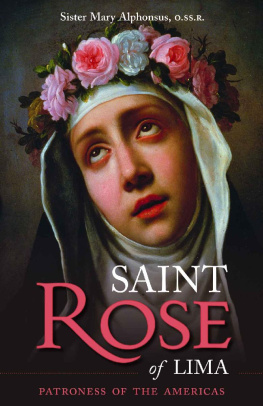

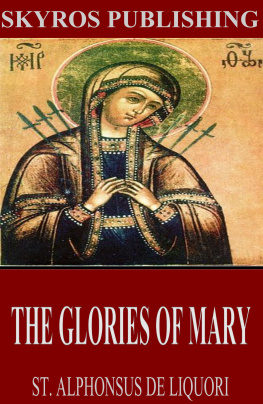

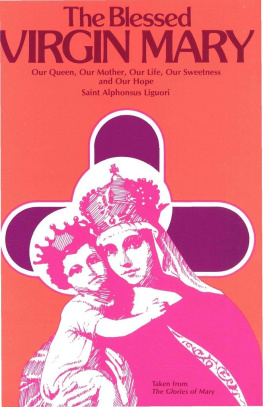

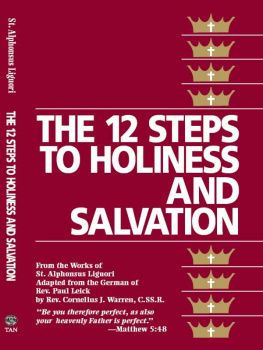


![Saint Alphonsus de Liguori - The Saint Alphonsus de Liguori Collection [30 Books]](/uploads/posts/book/134324/thumbs/saint-alphonsus-de-liguori-the-saint-alphonsus-de.jpg)
